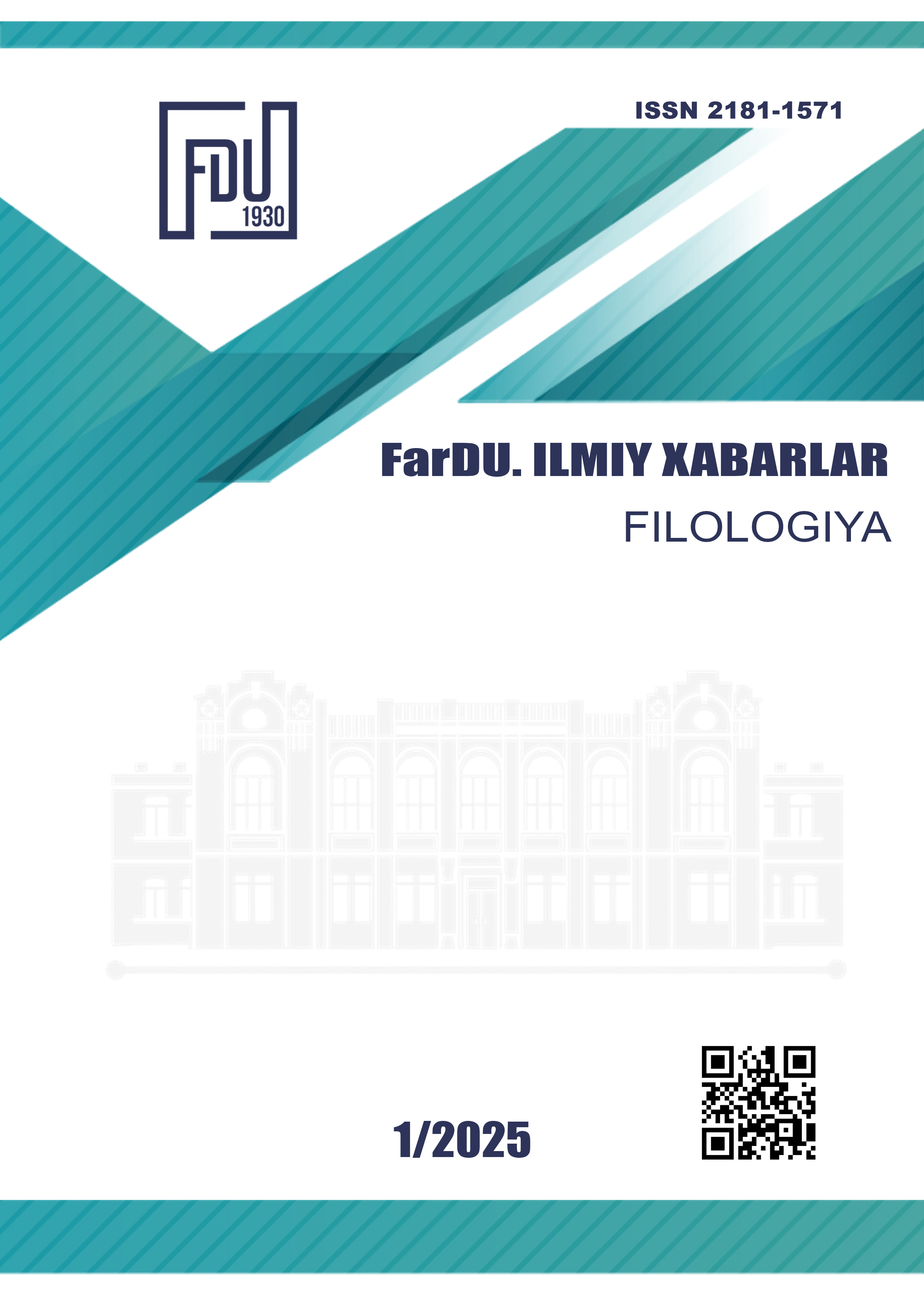ETYMOLOGY OF SOME WORDS IN THE DICTIONARY “GHIYAS-UL-LUGHAT” BY MUHAMMAD GHIYASUDDIN
Keywords:
лексикография, маънои калима, пайдоиши калима, этимология, “Ғиёс-ул-луғот”Abstract
RESUME
Muhammad Ghiyas-ud-din Rampuri, one of the most virtuous and learned men of his time, fluent in Tajik-Persian, Arabic, Urdu and Turkish, wrote “Ghiyas-ul-Lughat” as a comprehensive cultural treatise. From reading the dictionary and other works of the author, it becomes clear that he had a relatively good command of some of the sciences of his time and enjoyed a reputation and a respectable position among the intellectuals of that time from his youth. Before writing “Ghiyas-ul-Lughat”, he read many lexicographic and specialized works and devoted his scholarly work mainly to this dictionary. As a popular cultural work, “Ghiyas-ul-Lughat” was published more than 13 times and gained great popularity and authority among the educated people of India, Iran and especially Central Asia, more than in other cultures. This culture has not lost its significance, despite the existence of modern lexicographic works. “Ghiyas-ul-lugat” is a work that can be used in all respects for lexicological research, the history of the Tajik language and lexicography. The article examines the etymological features of some words from the dictionary of Muhammad Giyosiddin “Giyos-ul-lugat”.
References
Алишер Навоий асарлари тилининг изоҳли луғати. 1-4 жилдлик // Э.И.Фозилов таҳрири остида. – Тошкент: Фан, 1983
Маҷитова С. Антропонимҳо – ифодагари хислатҳои инсон дар ғазалиёти Абдураҳмони Ҷомӣ. - FarDU. ILMIY XABARLAR JURNALI. - 2024/№6. B.410-419.
Муҳаммадҳусейни Бурҳон. “Бурҳони қотеъ” ҷ.I. Таҳияи матн бо пешгуфтор, мулҳақот, тавзеҳот ва феҳристи Амон Нуров. – Душанбе: Адиб, 1993. -416 с.
Муҳаммадҳусейни Бурҳон. “Бурҳони қотеъ” ҷ. II. Таҳияи матн бо пешгуфтор, мулҳақот, тавзеҳот ва феҳристи Амон Нуров. – Душанбе: Адиб, 2004. -424 с.
Муҳаммадҳусейни Бурҳон. “Бурҳони қотеъ” ҷ. III. Таҳияи матн бо пешгуфтор, мулҳақот, тавзеҳот ва феҳристи Амон Нуров. – Душанбе: Адиб, 2014. -398 с.
Муҳаммад Ғиёсиддин “Ғиёс-ул-луғот”, таҳияи матн бо пешгуфтор, мулҳақот, тавзеҳот ва феҳристи Амон Нуров. – Душанбе: Адиб. ҷ. I. 1987.- 472 с.
Муҳаммад Ғиёсиддин “Ғиёс-ул-луғот”, таҳияи матн бо пешгуфтор, мулҳақот, тавзеҳот ва феҳристи Амон Нуров. – Душанбе: Адиб. ҷ. II. 1988.- 416 с.
Муҳаммад Ғиёсиддин “Ғиёс-ул-луғот”, таҳияи матн бо пешгуфтор, мулҳақот, тавзеҳот ва феҳристи Амон Нуров. – Душанбе: Адиб. ҷ. III, 1989.- 304 с.
Фарҳанги забони тоҷикӣ. Иборат аз 2 ҷилд. – М., СЭ, 1969. – Ҷ.1. -908 с.; Ҷ.2. -908 с.
ﺪﻜﺗﺮ ﻣﺤﻣﺩ ﻣﻌﻴﻥ. ﻔﺮﮪﻧﮓ ﻔﺎﺮﺴﻰ. ﺘﮭﺮاﻦ،۱۳۷۱
ﺪ ﻫﺨﺪ ﺍ ﻋﻟﻰ ﺍﮐﺑﺮ. ﻠﻐﺘﻧﺎ ﻤﻪ. ﺠﻠﺪﻫﺎﻯ ١ ﻮ ۱۴. ﭽﺎﭗ ﺍﻮﻞ. ﺘﻬﺮﺍ ﻦ. ١٣٧٢
Downloads
Published
Issue
Section
License
Copyright (c) 2025 Scientific journal of the Fergana State University

This work is licensed under a Creative Commons Attribution-NonCommercial-NoDerivatives 4.0 International License.

